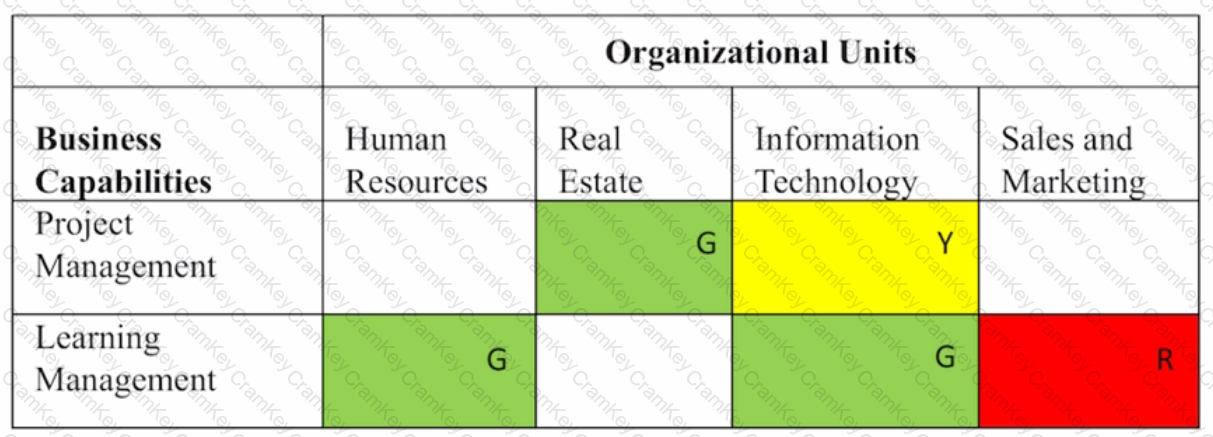| Exam Name: | TOGAF Business Architecture Foundation Exam | ||
| Exam Code: | OGBA-101 Dumps | ||
| Vendor: | The Open Group | Certification: | The Open Group Certification |
| Questions: | 110 Q&A's | Shared By: | leela |
Which of the following best describes where business scenarios are used in the TOGAF ADM?
Consider the following modeling example, relating business capabilities to organization units so as to highlight duplication and redundancy:

(Note in this example the cells colored green, yellow, and red, are also marked G. Y, and R, respectively) Which of the following best describes this technique?
What is presented as "striking a balance between positive and negative outcomes resulting from the realization of either opportunities or threats"?